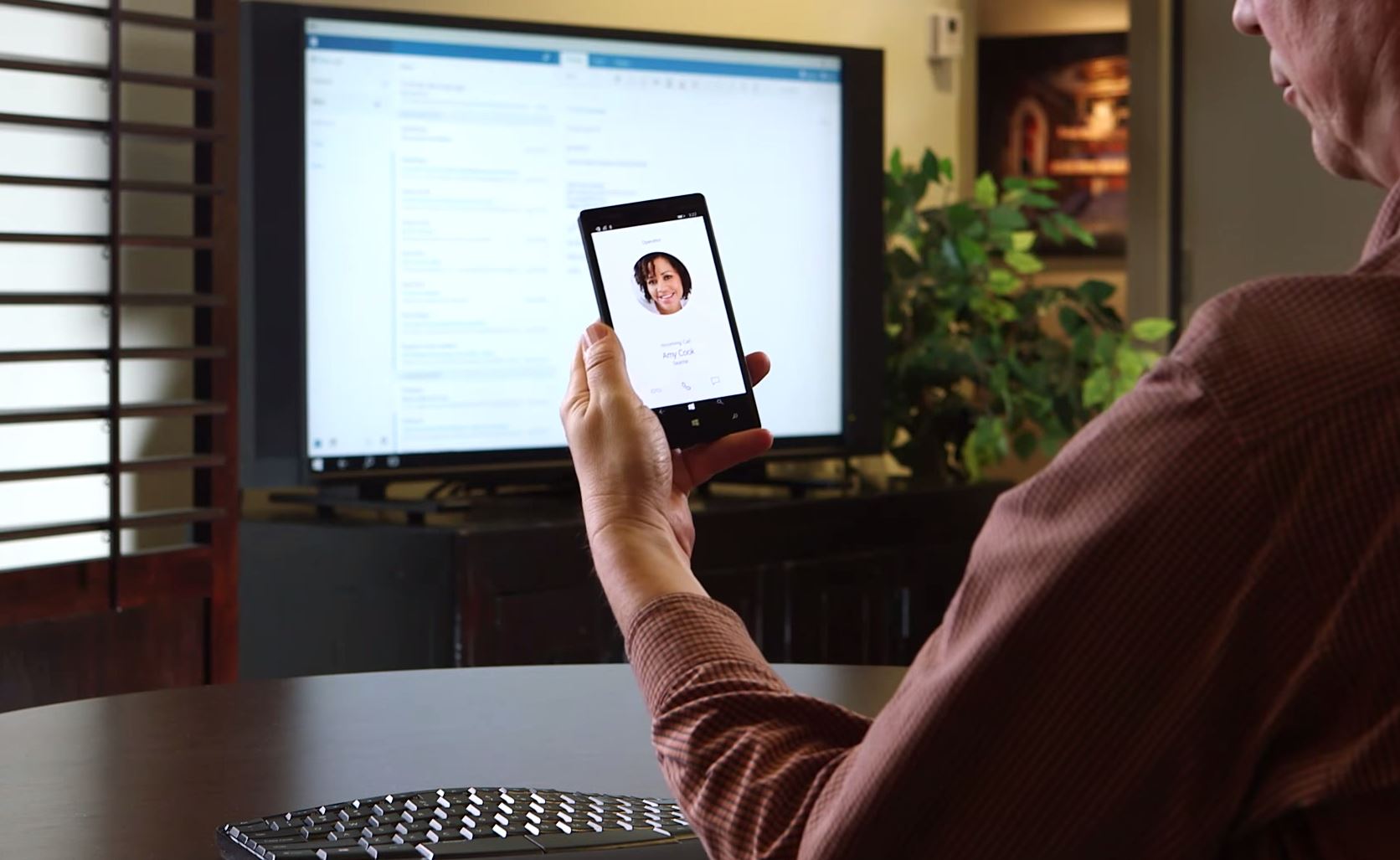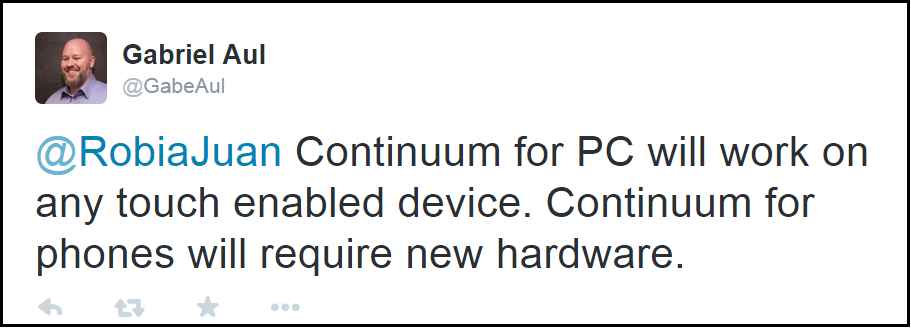Continuum for Windows 10 Phones does require new Qualcomm hardware

One of the biggest new features of Windows 10 for phone – and the last feature to be announced before RTM – is Continuum. Revealed at Build this week, the new tech lets users adopt two modes for their phone and a second display.
For instance, you can use your phone as a remote mouse and keyboard for the second screen. However, other operating systems can already do such things. The more interesting addition is the ability to run your phone on the second screen, including all the apps. Moreover, since these are universal Windows apps, they scale up just like being on a full PC. This technology lets you turn any second display into a full PC, and it could change how we think about computing.
New Hardware
During the Build keynote, Microsoft's Joe Belfiore made it quite clear that new phone hardware would be needed to power the graphics of two displays. Continuum is, after all, not Miracast. What that technology is exactly, is currently not known, but it has to do with dual video output.
Likewise, during the private media event where members of the press were allowed to ask members of the Windows leadership team questions, they were very cagey on this topic. It was made clear to us though that new phones would be needed. In fact, Belfiore could not even demo the feature on stage, and neither could they during this private media event.

Microsoft's Gabe Aul also responded on Twitter to questions about Continuum, emphatically stating:
"Continuum for PC will work on any touch enabled device. Continuum for phones will require new hardware."
Later, as the conversation progressed he reiterated:
"No, it will require new hardware for Continuum for phones."
Going a bit further, Joe Belfiore mentions these things in the promo video explaining Continuum for phones. At the 1:35 mark, Belfiore says:
All the latest news, reviews, and guides for Windows and Xbox diehards.
"And with new parts from Qualcomm, we have processors that can drive two screens separately in these new phone devices. And that is how we enabled the phone screen to work independently from the PC screen."
Even at the very beginning of the video, Belfiore refers to "carrying a new phone device in your pocket".
To be honest, we are not sure why there is debate about this topic. Microsoft has been clear about the new phone part since the keynote. Granted, getting any more detail out of them has been difficult, but on this issue it seems quite definitive. If current hardware could do this technology, Microsoft would likely have emphatically said so and not constantly refer to "new phone" devices.
Continuum may not even be ready at Windows 10 for phone RTM when current phones first get updated. Later, in the fall, Microsoft can launch new flagship phones sporting this technology, which will work great for commercials and advertising. These timeframes are the likely roadmap for Windows 10 for phone and Continuum, so do not get your hopes up too high for anything else.

Daniel Rubino is the Editor-in-chief of Windows Central. He is also the head reviewer, podcast co-host, and analyst. He has been covering Microsoft since 2007 when this site was called WMExperts (and later Windows Phone Central). His interests include Windows, laptops, next-gen computing, and wearable tech. He has reviewed laptops for over 10 years and is particularly fond of 2-in-1 convertibles, Arm64 processors, new form factors, and thin-and-light PCs. Before all this tech stuff, he worked on a Ph.D. in linguistics, performed polysomnographs in NYC, and was a motion-picture operator for 17 years.
